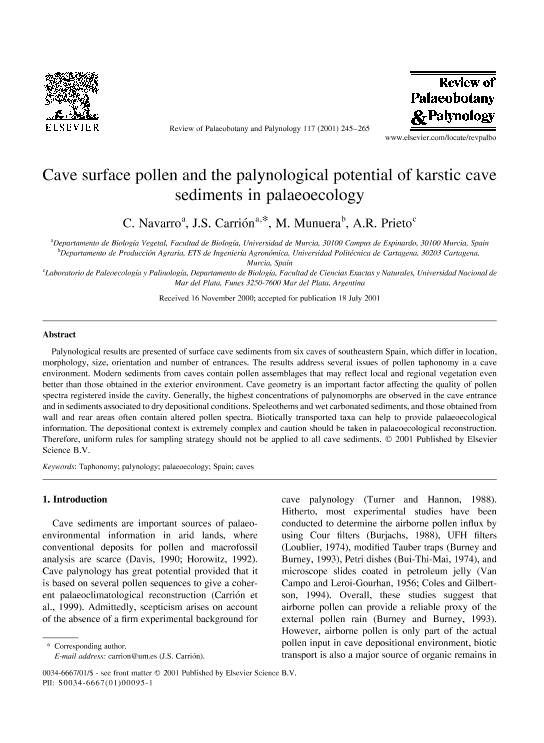Artículo
Cave surface pollen and the palynological potential of karstic cave sediments in palaeoecology
Fecha de publicación:
21/11/2001
Editorial:
Elsevier Science
Revista:
Review of Palaeobotany and Palynology
ISSN:
0034-6667
Idioma:
Inglés
Tipo de recurso:
Artículo publicado
Clasificación temática:
Resumen
Palynological results are presented of surface cave sediments from six caves of southeastern Spain, which differ in location, morphology, size, orientation and number of entrances. The results address several issues of pollen taphonomy in a cave environment. Modern sediments from caves contain pollen assemblages that may reflect local and regional vegetation even better than those obtained in the exterior environment. Cave geometry is an important factor affecting the quality of pollen spectra registered inside the cavity. Generally, the highest concentrations of palynomorphs are observed in the cave entrance and in sediments associated to dry depositional conditions. Speleothems and wet carbonated sediments, and those obtained from wall and rear areas often contain altered pollen spectra. Biotically transported taxa can help to provide palaeoecological information. The depositional context is extremely complex and caution should be taken in palaeoecological reconstruction. Therefore, uniform rules for sampling strategy should not be applied to all cave sediments.
Palabras clave:
Caves
,
Palaeoecology
,
Palynology
,
Spain
,
Taphonomy
Archivos asociados
Licencia
Identificadores
Colecciones
Articulos(IIMYC)
Articulos de INSTITUTO DE INVESTIGACIONES MARINAS Y COSTERAS
Articulos de INSTITUTO DE INVESTIGACIONES MARINAS Y COSTERAS
Citación
Navarro, C.; Carrión. J. S.; Munuera, M.; Prieto, Aldo Raul; Cave surface pollen and the palynological potential of karstic cave sediments in palaeoecology; Elsevier Science; Review of Palaeobotany and Palynology; 117; 4; 21-11-2001; 245-265
Compartir
Altmétricas




